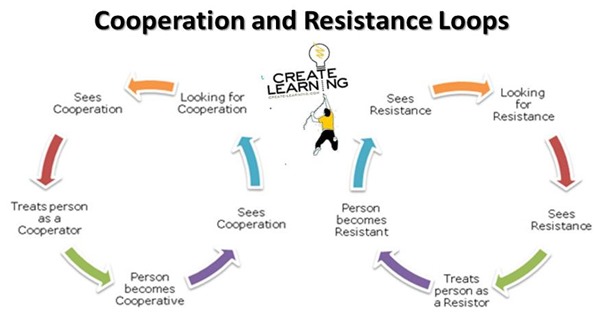
Teams complete their work in many environments. The external forces within a workplace may favor a particular type of work or policy, or it may make a kind of work more challenging.
Top managers of an organization have to recognize environmental differences in the team’s work. When a management team attributes “good” or “bad” work to the team without taking in the environment, the attribution eventually becomes self-fulfilling.
Attributions are potent within organizations; they can sustain both cooperation & resistance spirals

Once a team is labeled (or self-identifies) as either “good” or “bad,” it is tough to change how people perceive them. Interestingly “good” teams seem to get reinforced by more interesting work, reinforcing the “good” team label where managers see this team as more competent. “Bad” teams receive little recognition & may be given the less desirable work – because managers see the “bad” as less competent. Eventually, team members accept, or the environment creates confirmation bias that these labels are valid.
A Cooperation or Resistance Spiral can be hard to break once established & reinforced.
What actions can managers take to move a perceived “bad” team to “good”?
The intuitive management action of directly intervening, taking an authoritarian role, to get the team back on track does not work. Unfortunately, directly intervening can confirm team members’ & others’ perception of “bad,” having an opposite effect of what the manager intended.
Two Steps for Managers
- The manager takes steps to improve the structure of the team, the support from the organization, or the behavior of people in the teams external environment who are creating challenges for the team. The manager works to provide support systems for the team to work as opposed to the manager forcing the team to work harder – doing more of the same.
- Once the team is in good shape organizationally, the team is given work that is likely to result in success.
These two steps might reverse the perception of the team & how another views the team, leading a re-labeling.

